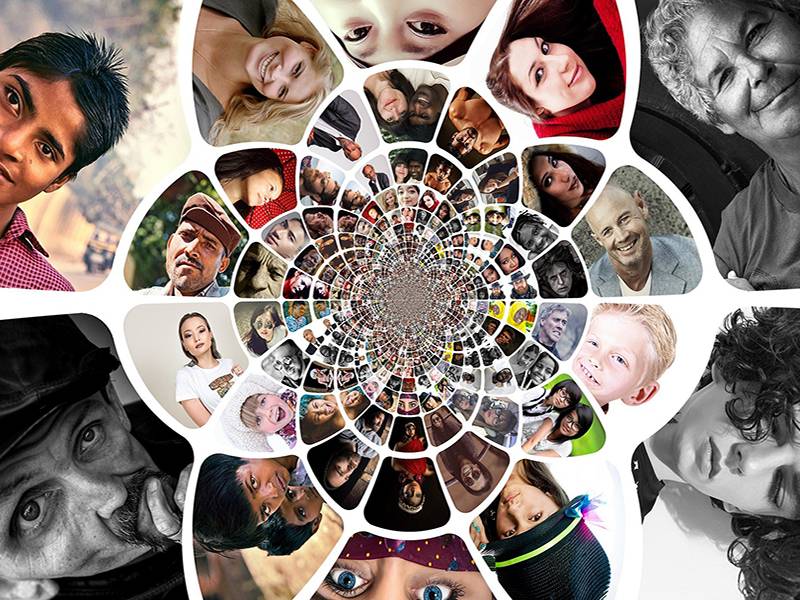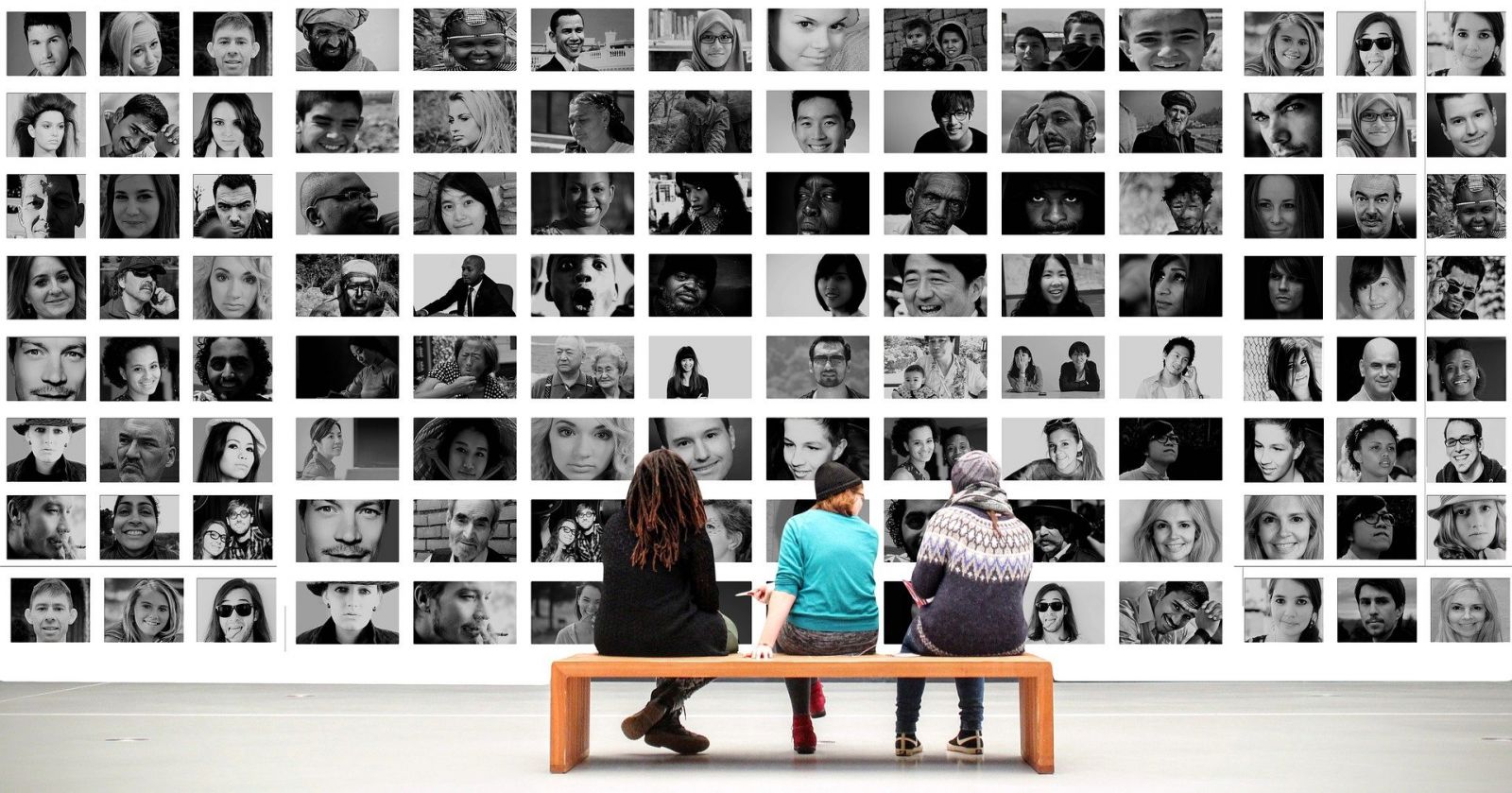Why Your Association Should Care About Diversity?

As people-centred organisations, associations depend on diversity to fulfill their mission, to ensure their continued relevance and to increase their long-term impact. If member engagement was the topic of the 2010’s, tackling questions of diversity, inclusion and equity will be the watershed in successful associations in the 2020’s. In this article, ten global association leaders share their insights on why your association should care about diversity.
Diversity is nothing new to the association world, in fact, diversity is part of the very DNA of the association business model. “I think a truly global organisation has to include voices and experience from around the world, which in itself will help with the inclusion of previously marginalized or unheard voices or constituents,” says Colleen Eubanks, CEO of the International Association for the Study of Pain. “The association sector is a professional community where sharing and collaborating brings positive change”, confirms Tracy Bury, Deputy CEO of World Physiotherapy and President of AC Forum. Many corporations are also realising that investing in diversity is not just ethical, but also provides a competitive advantage. Research has shown that culturally diverse boards worldwide make 43% higher profits than homogeneous boards, and more diversity within a company leads to more popular and relevant brands.
It should therefore come as no surprise that investing in diversity means investing in the long-term future of our associations:
- Diversity ensures that we remain relevant: “Associations need to stay relevant for their members and sector, which means they need a deep understanding of the diversity and needs within their membership,” explains Tracy.
- Diversity helps us to attract and retain talent: “Diverse and inclusive workplaces earn deeper trust and more commitment from their employees,” reveals Jeanette Fava, Finance and HR Manager of the European Social Network. “These are competitive advantages in a market where we are all looking for intelligence and talent willing to work for non-profit salaries.”
- Diversity allows us to innovate: “Diverse contributions from different perspectives lead to better decision making and unique problem-solving opportunities for associations,” says Jenny Faucher, President & CEO of Managing Matters.

EDI: Making Sense of Diversity
While it is evident that diversity is so important, it may be less clear what ‘diversity’ actually means in the context of association strategy. Is ‘diversity’ the same thing as ‘gender equality’? How do ‘inclusion’ and ‘equity’ play into the mix?
Diversity is the presence of difference within a given setting. Hence, teams can be diverse, people cannot. Diversity goes beyond physical aspects such as age, gender and race, and includes cognitive aspects such as education, experience and attitudes. Diversity is just the starting point on our EDI journey: “Most companies have gotten used to the idea that we need the mixed workforce,” says Andrés Tapia, author of ‘The Inclusion Paradox’, “but they have not been ready for making the mix work, or how difficult it is. Because the more diverse a workforce is, the more difficult it is to manage.”
Inclusion is about people being and feeling welcome and valued. It isn’t a natural consequence of diversity, and it takes effort to understand how everyone, from team members to volunteers, can feel valued. Diversity is being asked to the party. Inclusion is being asked to dance. “Everyone has a voice and, thus, the right to speak and be heard”, says Antonella Cardone, Director of the European Cancer Patient Coalition, when talking about advocating for patient rights, “if we act together, we are stronger.”
Equity means designing systems and processes that make inclusion possible. Equity asks us to take into consideration that everyone has different needs and different contributions to add. While equality means treating everyone the same, treating everyone equitably means giving them what they need as individuals. How can we create equity for our association members and staff? “Ask them – they will tell you what they want.” says Lindsey Mancini, Head of Secretary General's Office at UITP. For instance, “we are learning that women want shorter, more focused events, are less interested in networking but more interested in techniques such as small break-out sessions.”

Seven Steps to Towards Diversity
While becoming a bit of a buzzword, diversity is often more nuanced than first meets the eye. It is more than avoiding ‘manels’ (all-male panels) or about making millennials join our events. In order to be more than a CSR campaign, we have to once again embed diversity in all key areas of our associations. “There is a tremendous need for developing a meaningful action plan for accelerating equity, diversity, and inclusion in the association arena,” says Tina Wehmeir, President & CEO of AMC Institute. “To move beyond statements and infuse a new perspective throughout an association, one must approach the workforce, mission, and vision, and the board of directors through an EDI lens.”
Here are seven ideas of how to get started:
-
Remember Your ‘Why’
Ask yourselves: what does ‘diversity’ mean to you? Why does it matter? “Start by examining your vision, mission, and values: are diversity, equity, and inclusion part of this equation? If the association is to maintain its relevancy into the future, this will be a key piece,” advises Faucher. There is no single right answer, and every association community will have to find its own reason why they want invest in diversity. “With all of these noses pointing in the same direction and working towards the common goal, association governance structures, policies and procedures should be empowering instead of limiting,” adds Caroline Teugels, CEO of PodiatryInternational and ESAE Treasurer.
-
Talk Openly with Your Members
Any authentic push for diversity has to be built on an open and inclusive dialogue with our members. “To truly innovate and change, you need to have people on board,” adds Maria Rosa Gibellini, Director General of the European Internet Forum. “They need to understand where you are going and why, or they will be lost or won’t follow.” Opening up the discourse to new voices and opinions is a great opportunity for innovation, yet it requires effort, time and a deep willingness to adapt. “Just because an organization wants to or needs to change, doesn’t mean that transformation will be going to go smoothly”, Gulnaz Tariq, President of the World Union of Wound Healing Societies, reminds us. Be open, transparent and know that change never happens overnight.
-
Be Patient, Positive and Creative
While acknowledging diversity is an important first step, inclusion is built on dialogue and consensus – often with people outside the traditional ‘core circle’. This requires flexibility and creativity, according to Lynette Tan, Chief Executive of Singapore Space & Technology: “In order to make change happen, we have to be willing to adopt different strategies and take different paths.” This also means finding a language that doesn’t alienate members of the community. “Words and branding do matter”, confirms Julie Nazerali, President of the INSEAD Inclusive Leadership Initiative, “change the narrative to something positive and find programmes that put EDI into practice without preaching.”
-
Diversify Your Governance
While your board composition should ideally reflect that of your membership, research indicates that improving just the cognitive diversity can already significantly enhance the performance of a board. “I am an advocate for talent-based boards in associations,” says Teugels. “By looking at the skills and expertise needed to advance the mission of the association, diversity will more naturally find its way into the structures of the association. Being aware of unconscious bias and building up awareness are the first steps towards real change.”
-
Create an Inclusive Work Environment
By truly investing in your secretariat team, your association can become a place that attracts the talent needed for long-term sustainability. “I think that associations are unique environments where everyone’s skills can be put to use and developed further,” states Nathalie Moll, Director General at EFPIA. “[A strong focus on HR], coupled with the capacity to adapt to our workforce’s needs, gives the best possible level of teamwork and, ultimately, results. Successful associations have understood that it is not only about giving equal opportunities but also about offering adapted opportunities.”
-
Lead… and Listen… by Example
Equity and inclusion are not theoretical concepts, they can only be implemented through daily practice. Here, association executives play a key role and need to lead by example. “Getting to know different people and organisations and then serving as a conduit or connector can be one of the most powerful aspects of being an association executive,” says Eubanks. Bringing inclusiveness to life starts with small everyday gestures: “Always give a great welcome to those joining your circle: personal connections and regular touch points for support do make a difference. We tend to forget how attending a “European’ meeting may seem daunting to newcomers at national level,” reminds us Laure Alexandre, Executive Director at Seldia.
-
Build A Support Network
“Change is not an easy thing to do, there are often tremendous barriers that we need to overcome,” admits Tariq. “Support systems play a vital role in implementing change and ensuring we are all moving in the right direction together.” If you believe in advocating for more diversity, equity and inclusion at your association, know that you are not alone. There is a growing community of association professionals willing to tackle this challenge. “In today’s globalized world, communication and inclusive dialogue are essential,” reminds us Cardone. “Sometimes, the smallest partners can have the greatest solutions. It is all about cooperation and coordination within a democratic and resilient system.”

Tackling Diversity Together
“I say this loud and clear: Let us be our own disruptors! Let us not wait until someone else starts changing the rules. Let us dare to implement new ways of serving our members not only through new technology but also by challenging the rigidity of governance or leadership that can be found in some associations.” Caroline Teugels
Equity, diversity and inclusion (EDI) are integral aspects of association success – only by speaking with and for all members can we truly claim to be ‘the voice’ of our sector and make an impact. Members, policy makers and partners alike, expect associations to lead the way when it comes to building consensus, collaboration and synergies across gender, generational and sectorial divides. While many of us are realising the critical importance of diversity, few tools and resources exist that could help association leaders to successfully implement diversity and inclusion policies. Short in guidance and resources, international associations are therefore often struggling with a topic where they could be acting as role models and thought leaders for their sectors.
Fortunately, we are not alone when it comes to the association EDI journey. The voices of passionate association leaders that are heard throughout this article are proof that knowhow, experience and best practice is out there. All we have to do is to build on these insights and inspire each other to innovate. “The associational sector coalesces around agreed priorities together,” suggests Rachel Barlow, Convergence Coordinator at Dafne-EFC, and “these should address the core of the rationale behind associations.” Why not make a start by tackling diversity together? Building on the insights gained over the last two years of showcasing Women Who Advance Associations, a coalition of association players is aiming to do just that by working towards a diversity charter for international associations. We believe that the act of developing, launching and signing a charter can create visibility, as well as a sense of motivation and momentum to all those willing to invest in diversity. Developed by the sector for the sector, let’s work towards diversity charters that promote best practice and inspire.
 Author: Benita Lipps, Head of Interel Association Management
Author: Benita Lipps, Head of Interel Association Management
The association leaders quoted in this article were featured as Women Who Advance Associations, a global initiative by Interel Association Management, visit.brussels, FAIB, ASSOCIATIONWORLD, GAHP, HQ Magazine and Kadrant Law to celebrates the great talent and diversity of the international association community and to promote an association sector where diversity and inclusion are taken as necessary prerequisites for change. Find out more at: https://womenwhoadvance.eu/







